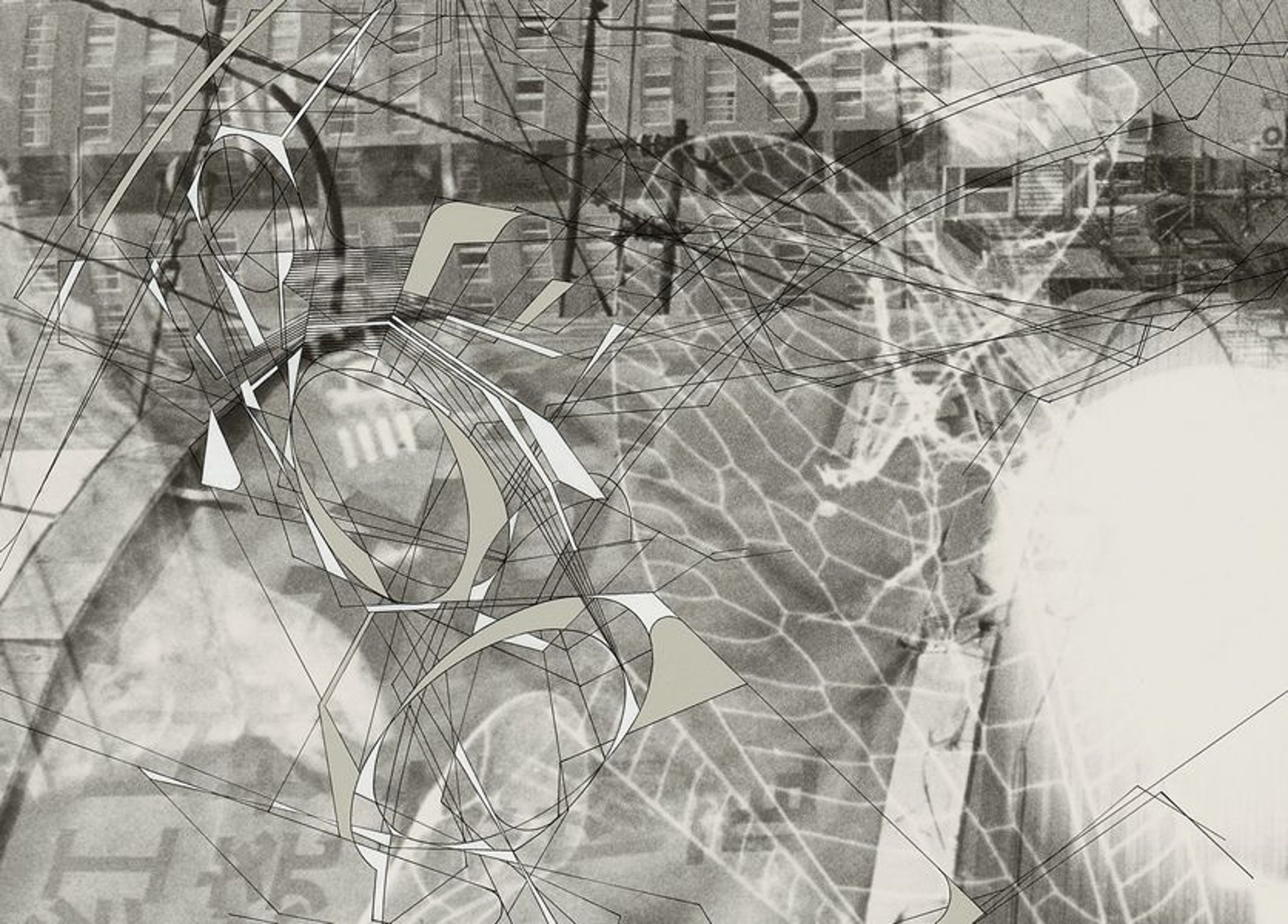Aki Lumi’s new work “traceryscape” consists of monochrome
photographs of everyday landscapes and urban scenes directly on top of
which have been drawn countless fine lines and elaborate shapes.
In some of the works the original landscapes are shown not in their correct
orientations, but are tipped on their sides, meaning they lack a stable
perspective. And thus one of the criteria upon which we usually build
our perceptions of the outside world has been effortlessly removed. Here
landscape is not something that extends into the distance; it extends
up and down. In other words, we are reminded that the photograph has,
after all, just two dimensions.
Furthermore, if you follow with your eyes the lines and shapes that skate
freely across the surface of the landscapes, you realize that your gaze
stops short – as though caught in a trap set by the artist –
on devices in the scenery: superfine details that in an ordinary photograph
would escape your notice; the “background,” which is normally
relegated to the role of a photograph’s supporting-actor. Antennas
so thin they disappear into the sky, strange wires hanging down from signs,
unintelligible markings on buildings – all are now lodged firmly
in the viewer’s gaze.
Renouncing the photographic context, suddenly you are made aware that
your own eyes are not “reading” the meaning of the “image,”
but are moving over the surface of the “paper” like a scanner.
And yet at that very instant the object of your sight is a shape and,
at the same time, a photograph. What is it happening on the surface of
these photograph which were supposedly captured by an optical instrument?
The important thing is that Aki is not correcting or making additions
in the stage, or dimension of “image,” but rather on the photographic
paper that exists in the real, physical world. That is to say he is bringing
about an event on the surface of the “paper.” The “traceryscape”
works might be called singular “event photographs,” which
arise through the careful layering of two photographs: the “real
landscapes” of the outside world and those of another dimension
that exists in parallel to them – the dimension of “imaginary
lines and shapes” taken from the expanses of our awareness.
In this series the presence of insect wings also adds another measure,
or criteria. The microscopic wings of insects are stuck directly on the
photographic negative. This means the insect wings are enlarged, with
the negatives, many hundreds of times, leading to another breakdown in
the perspective between dimensions. Because the insects are not exposed
in the negatives, but instead blown up themselves in the enlarger, they
do not go through the stage of “image.” Instead they are themselves
stamped, so to speak, directly on the photographs.
Lines, shapes, insect wings, the mesh of light – brought together
on a graytone landscape, with nice materials, the new landscape of awareness,
or traceryscape, is born.
Aki uses the word “system” often when he talks about his work.
It’s a word not often associated with art, but when you think about
the theatre-like stage on which his drawing/photographs are made it is
easy to understand where it comes from. It consists of the types and relations
between the small rules he establishes for himself in making his art.
This can be seen plainly in his drawing series, “trace.” For
that series there is no use of freehand; his pictures are made using only
a ruler and a compass. Like making a tableau, he is out not to simply
fix a single vision on the paper. In accordance with the automatic systems
he has made for them, each line and the plane gives way to the next, in
a form of self propagation. Of course, it is the artist’s imagination
that leads them on, but still there is an element of chance, with the
artist not knowing when or how the drawing will change or when an accident
will occur. It could be called the “automaton drawing series.”
The new “traceryscape” works represent a significant development
in this process. Unlike drawings, which begin with a tabula rasa, it is
the very landscape in front of your eyes – which no matter how much
you add do not disappear – that has now become his drawing paper.
I believe his “system” (or relations) has gained in importance
in our awareness and formation of the world.
— Linn K.
translated by Edan Corkill

Feature
TraceryscapeA net-enshrouded landscape
Monochrome photographs of everyday landscapes and urban scenes are superimposed with crisply detailed line drawings, colored ink, and magnified wings of flies. Photo-based artwork by Aki Lumi,
text by Linn K.
View Images
Feature
Traceryscape
A net-enshrouded landscape
Monochrome photographs of everyday landscapes and urban scenes are superimposed with crisply detailed line drawings, colored ink, and magnified wings of flies. Photo-based artwork by Aki Lumi,
text by Linn K.
TraceryscapeA net-enshrouded landscape
Monochrome photographs of everyday landscapes and urban scenes are superimposed with crisply detailed line drawings, colored ink, and magnified wings of flies. Photo-based artwork by Aki Lumi,
text by Linn K.


